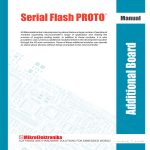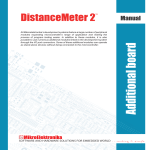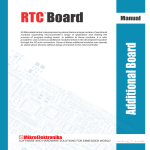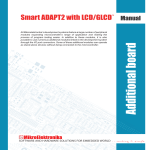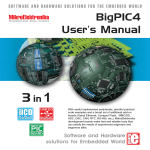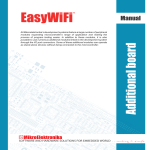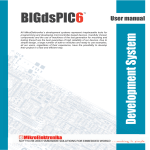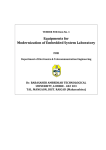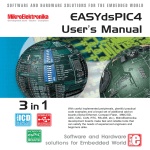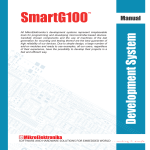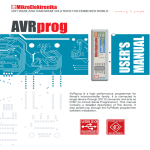Download MMC/SD Board User Manual
Transcript
All Mikroelektronika’s development systems feature a large number of peripheral modules expanding microcontroller’s range of application and making the process of program testing easier. In addition to these modules, it is also possible to use numerous additional modules linked to the development system through the I/O port connectors. Some of these additional modules can operate as stand-alone devices without being connected to the microcontroller. Manual Additional Board MMC/SD ™ MikroElektronika MMC/SD MMC/SD Additional Board A MultiMedia Card (MMC) is a memory card manufactured in Flash technology. The standard size of these cards is 24×32×1.4 mm. MMC cards have been superseded by Secure Digital Cards (SD cards) lately, but they are still very popular and widely used because they can be utilized with most devices that support SD cards. Both types of cards are used as memory data storage in portable devices such as cameras, digital audio players, cellular phones, etc. Most modern computers are supplied with an MMC/SD slot that can read both MMC and SD cards. The MMC/SD additional board enables data read/write between a microcontroller and MMC/SD cards. Data transfer is performed via a standard Serial Peripheral Interface (SPI). Due to built-in voltage level converters, such as 74LVCC3245, these cards may be used both with 3.3V and 5V microcontrollers. The position of jumper J1 depends on the power supply voltage level. The MMC/SD additional board is connected to Mikroelektronika’s development systems via a standard IDC10 connector. Figure 1: MMC/SD additional board Figure 3: MMC/SD additional board connection schematic MikroElektronika Figure 2: MMC/SD additional board connected to a development system MMC/SD DIP switch SW1 is used to select microcontroller pins to be used for SPI communication. When the MMC/SD additional board is conected to EasyPIC, LV18F, EasyLV-18F, and BigPIC development systems, the following switches on the DIP switch SW1 should be set to the ON position: P4 -> MISO P5 -> MOSI P3 -> SCK For EasyAVR and Easy8051 development systems, the following switches on the DIP switch SW1 should be set to the ON position: P6 -> MISO P5 -> MOSI P7 -> SCk For the EASYdsPIC development system, the following switches on the DIP switch SW1 should be set to the ON position: P2 -> MISO P3 -> MOSI P6 -> SCK For the Easy24-33 development system, the following switches on the DIP switch SW1 should be set to the ON position: P2 -> MISO P5 -> MOSI P3 -> SCK MikroElektronika If you have any questions, comments or business proposals, do not hesitate to contact us at [email protected] If you are experiencing some problems with any of our products or just need additional information, please place your ticket at www.mikroe.com/en/support If you want to learn more about our products, please visit our website at www.mikroe.com Mouser Electronics Authorized Distributor Click to View Pricing, Inventory, Delivery & Lifecycle Information: mikroElektronika: MIKROE-3





